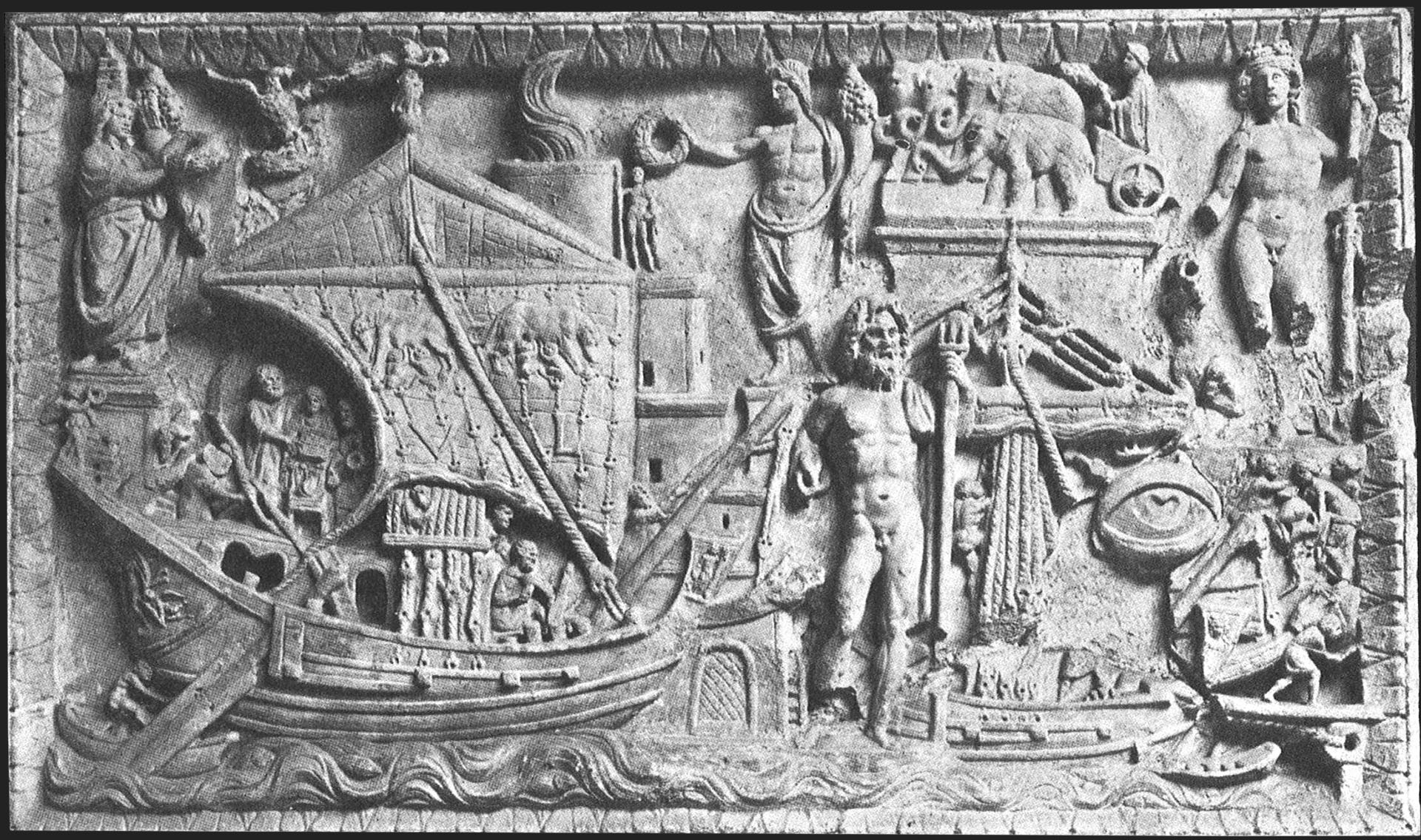
180—190 CE.
75 × 122 cm. Rome, Torlonia Museum
Relief with a port scene.
180—190 CE.
75 × 122 cm.
Rome, Torlonia Museum
(Roma, Museo Torlonia).
The Torlonia relief
The so-called Torlonia relief was found in 1863 or 1864 near the so-called Imperial Palace, between the harbours of Claudius and Trajan. It is made of Greek marble and measures 1.22 × 0.75. It is probably a votive offering from the nearby Temple of Liber Pater (Bacchus). On the sails of the ship to the left are the letters V L, meaning Votum) Libero or Votum Libens Solvit. It was made in the Severan period, as is suggested by the way in which people sacrificing on board of a ship are represented.
To the right is a ship that is tied to a mooring block (in the lower right corner). Examples of such blocks have been found around Trajan’s hexagonal basin. A porter carries an amphora of wine to the quay. The person who dedicated the relief was probably a wine merchant, and of course there is an association between Liber Pater-Bacchus and wine. Above the ship is a large eye, averting evil.
The ship to the left has just entered the harbour. On the deck (upper left) people are sacrificing — one of them a woman —
Between the two ships is Neptune with a trident. In the background and to the left is the lighthouse of Claudius, with a burning fire. To the right of the fire is a statue, possibly of Claudius or Nero. On either side of the lighthouse is a statue, holding a wreath and a horn of plenty. The female figure on the left (in the upper left corner) has a lighthouse on her head. This is the personification of Portus. The male figure to the right may be the Genius (protective deity) of the harbour. To the right of the female figure are an eagle and a winged figure, presumably Victoria.
In the upper right corner is a triumphal arch. On top is a chariot drawn by elephants. The person in the chariot may be the Emperor Domitian, because he holds a sceptre ending in a human head, which is also found on Domitianic coins. To the right is Liber Pater-Bacchus, holding a thyrsus and accompanied by a panther.
2019. Description: https://www.ostia-antica.org.